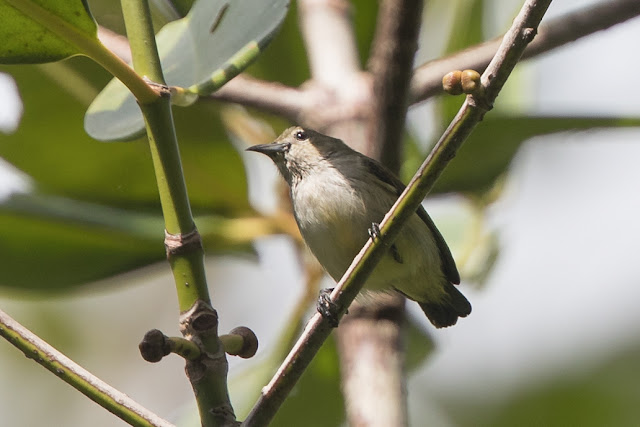This is my summary of records of rare birds from the UK in November 2017, this is not aimed at being a comprehensive account of all the rare species in the UK in this month, for such accounts see the Birdguides review of the week or the Rare Bird Alert weekly round-up. I am largely writing this as a personal record of rarity records to aid my knowledge and feed my interest in UK birds. The dates provided under each species are only the date of the finding of that bird, 'megas' are shown in red and a full date range for these species is shown. I have only included confirmed records and, generally, have not included possibles or probables. The photographs that I used have been gleaned from the internet, I aim to provide the photographer with full credit and a link to their website or blog, if you see that one of yours has been used and you object to this then please email me and I will remove it immediately, alternatively if you would like to supply a better image or additional information or links then I will add. Contact me at simon@ecosa.co.uk
NEARCTIC SPECIES
Pacific Diver
Marazion, Cornwall - The returning bird was reported off Marazion on 4th November and was seen on and off throughout the month. This bird is often distant and seen off various locations in Mounts Bay, sighting the bird relies on calm seas.
Pendower Beach, Cornwall - 1 offshore on 26th November.
Pied-billed Grebe
Loch Feorlin, Argyll - The adult male first recorded on the 6th May 2016 and intermittently since was again recorded on 2nd November.
Loch of Spiggie, Mainland / Shetland - 4th - 30th November, the first for Shetland. An account of the finding of this bird can be viewed here on the Rare Bird Alert website.
There are 44 British records and 12 Irish records of Pied-billed Grebe. The first British record was from Blagdon Lake in Somerset on 22nd December 1963, a one day bird that was Cine filmed. The species has been found in all months with April and November being the peak months. The prime counties are Cornwall and Somerset with seven records from each.
Pied-billed Grebe - Loch Spiggie, Shetland by Richard Ashby. More of Richard's Shetland birding and wildlife images can be seen on his Shetland Storm Force Photography blog. He also has a general photography website fantastic images here Amazing Shetland
American Coot
Lough Gill, Kerry - 9th November
Long-billed Dowitcher
Skomer, Pembrokeshire - 2nd November
Saltfleetby NNR / Lincolnshire - 6th November
Lesser Yellowlegs
Maxstoke, Warwickshire - 2nd November
Semipalmated Sandpiper
Whitton Sand, East Yorkshire - 4th November
Wilson's Snipe
Porth Hellick Pool, St. Mary's, Isles of Scilly - Another bird, the third of the Autumn was found at Porth Hellick Pool on 3rd November and remained until 6th November.
Bonaparte's Gull
Largs, Ayrshire - 17th November
Exmouth, Devon - 16th November
Lodmoor RSPB, Dorset - 24th November
American Horned Lark
Staines Reservoir, Surrey - 19th - 30th November
American Horned Lark - Fabulous image of this bird by John Rowland. The key features of this subspecies are the brown streaking on the chest the white (not yellow) supercilium extending over the bill and the more rufous plumage tones.
A bird possibly of either subspecies alpestris or hoyti, if confirmed, would be the first for the UK of one of the New World subspecies. Neither HBW Alive nor the IOC split the Horned Lark into multiple species due to current lack of information. However, it is likely that multiple species are involved with, for example, a recent molecular study suggesting that taxa in the Old World break into five species (see Drovetski, Rakovic, Semenov et al).
PALEARCTIC SPECIES
Ferruginous Duck
Rutland Water, Leicestershire and Rutland - 6th November
Dinton Pastures Country Park, Berkshire - 2 males on 7th November
Ham Wall RSPB, Somerset - 8th November
King Eider
Whiteness Head, Highland - Eclipse drake on 1st November
Wester Quarff, Mainland, Shetland - Adult male on 4th November
Rough Point, County Kerry - Female on 16th November
Snowy Owl
Bryher, Isles of Scilly - 1 on 30th November
Common Rock Thrush
The adult male first recorded on 12th October was last seen on 2nd November.
Siberian Stonechat
Skomer, Pembrokeshire - 2nd November
Halstow Marshes, Kent - 19th November
Pied Wheatear
Skinningrove, Cleveland - Female on 6th November
Hume's Leaf Warbler
Dungeness, Kent - 1 trapped and ringed on 9th November
Italian Sparrow
East Budleigh, Devon - 12th to 30th November
A sparrow showing characters of this species was present in the town of East Budleigh and has been visiting feeders with House Sparrow. While the characters of this bird look good for Italian Sparrow it would take DNA analysis to confirm the identification as such. While largely sedentary, HBW Alive states 'recovery in Italy of individuals ringed in S France (Camargue) and recovery on Corsica of one ringed on Italian mainland suggest that there can be significant dispersal.' This would be a first record for the UK if accepted. A good account of where to see this bird is available on the Devon Birds website here.
Possible Italian Sparrow - East Budleigh, Devon. Note that the bird has an overgrowth
on the upper mandible. Image by Steve Gantlett of Cley Birds.
Steve's images from Norfolk and around the UK can be viewed and purchased on his website Cley Birds here
Parrot Crossbill
Following the mini invasion in the northern islands in October the first confirmed records reached the mainland this month as follows:
Santon Warren, Norfolk - 28 on 26th November until the months end.
Upper Hollesley Common, Suffolk - 6 on 26th until the months end.
Wishmoor Bottom, Berkshire - 16 from the 26th to the months end.





























































